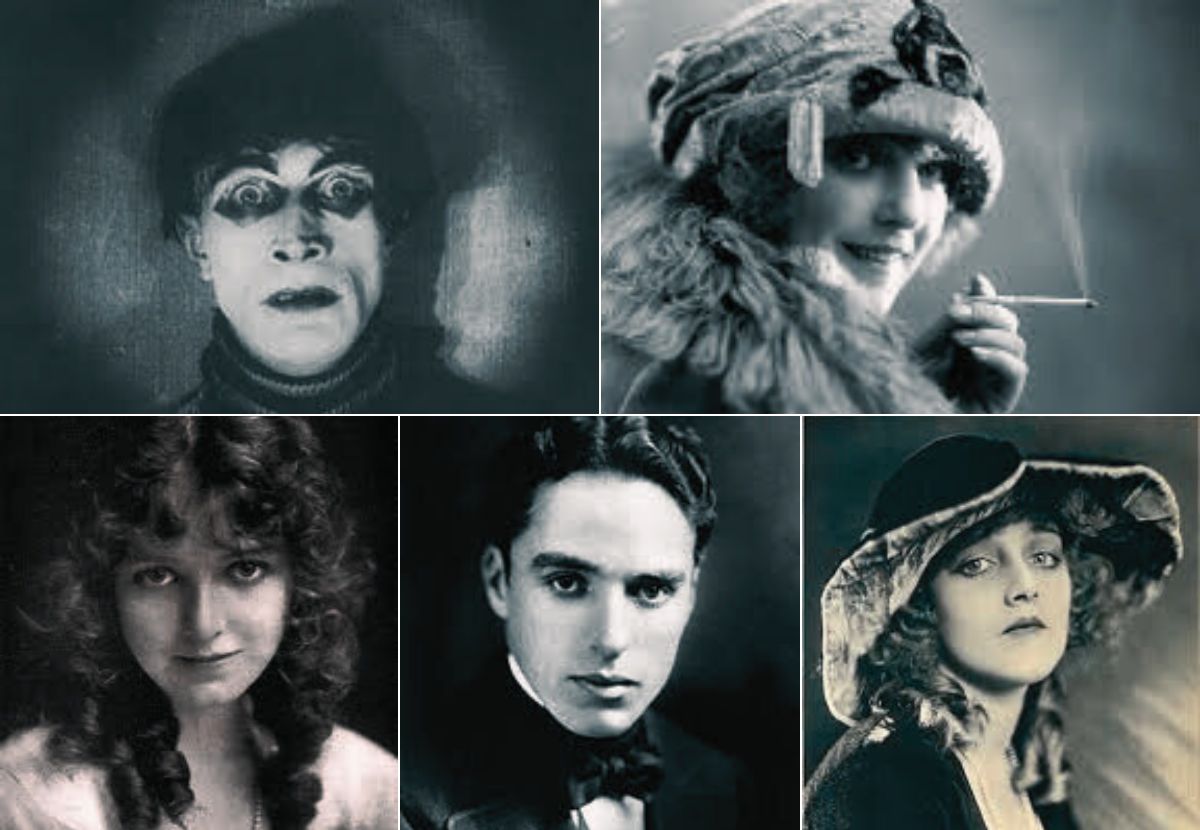Think about the last movie star you saw splashed across a magazine cover or trending online. Feels permanent, right? Now, rewind a century. Imagine a world where movies were new, magical, and utterly silent. Stars were born overnight, their faces beaming from flickering screens, captivating millions. But for every Charlie Chaplin or Mary Pickford who became a legend, hundreds of talented actors vanished. Not only from the screen, but from history itself. Their names collect dust, their work lost like tears in rain. These are the forgotten faces of silent film—artists devoured by time, technology, and tragedy.
Why Did the Lights Go Out? The Perfect Storm of Oblivion
It wasn’t bad luck. A cruel convergence of events colluded to wipe out these trailblazers:
The Talkie Tidal Wave (Late 1920s): This was the big one. Sound didn’t merely add voices; it killed careers overnight. Actors with thick accents, voices considered “wrong” for their image (a booming voice for a dainty ingenue?), or simply those who were considered fossils of an older mode, were summarily dumped. Studios were merciless. Picture years of training in expressive movement, only to be informed your voice did not “fit.”
Nitrate Nightmare: What film stock were they using back then? Nitrate. It was highly flammable (most vaults burned horribly), and, worse still, it degraded with time. It became powder, goo, or just disappeared. Thousands of films flat-out destroyed themselves. Without a surviving movie, how can the actor’s performance be preserved?
Style Shifts: Silent acting was HUGE—sweeping gestures, extremely expressive faces. When sound called for more naturalistic, closer performances, the previous style could appear ludicrous or exaggerated to new viewers. Stars who were unable to adjust fell by the wayside.
The Studio Grinder: Hollywood in its early days was a factory. Actors were frequently disposable commodities, particularly women. Contracts were limited, typecasting was ruthless, and careers were deliberately shortened as they grew older or when scandal struck (real or invented).
Pure Negress: Time goes on. Without perpetual revival, names are forgotten. Archives were underfunded or nonexistent. Actors just retired out of sight, their scrapbooks filling up with dust in attics. History neglected to look back.
Echoes in the Shadows: Faces Rescued from Oblivion (For Now)
Though an untold multitude of names are lost to eternity, indefatigable film historians, archivists, and fans struggle to recover fragments. Let’s introduce a few who momentarily emerge from obscurity:
Barbara La Marr: The Girl Who Was Too Beautiful (1896-1926)
Her Spark: Nicknamed “The Girl Who Was Too Beautiful” by a judge sentencing her (yes, really!), La Marr was the epitome of a 1920s “vamp.” Exotic, hot-headed, and exuding perilous charm, she played seductive women and sophisticated women with searing intensity. In real life, she was a writer, dancer, and scandalous party girl, representing Jazz Age excess.
Why Forgotten? Tragedy befell the young. She died at 29, probably from hard living, drugs, and TB, just as sound was revolutionizing everything. Many of her movies have perished. Her sensationalized life and untimely death made a cautionary legend, eclipsing her true screen charm.
Glimpse Her Ghost: If you can locate it, seek out The Prisoner of Zenda (1922). Even in surviving remnants, her magnetism sparkles.
Conrad Veidt: The Master of Shadows (1893-1943)
His Spark: You may dimly remember his eerie, sleepwalking Cesare in the German horror classic The Cabinet of Dr. Caligari (1920). But Veidt was a giant global star! His wildly expressive face and physique enabled him to excel at both horrific villains (The Hands of Orlac) and profoundly troubled heroes (The Man Who Laughs—direct inspiration for Batman’s Joker!). He escaped Nazi Germany and was successful in British (The Thief of Bagdad) and American films (Casablanca’s Major Strasser!).
Why Forgotten? Although he worked during the sound era, his most legendary roles were silent. Caligari and The Man Who Laughs are cult favorites, but his enormous amount of German silent work is not so well known. He passed away comparatively young at 50.
Glimpse His Genius: The Cabinet of Dr. Caligari is a must. The Man Who Laughs (1928) displays his extraordinary physicality and tragic depth.
Clara Bow: The “It” Girl Who Lost Her Spark (1905-1965)
Her Spark: “The It Girl” wasn’t popular; she was a supernova. Clara Bow WAS the Roaring Twenties on screen—alive, energetic, sexy, and completely human. Her naturalism and sheer energy revolutionized screen acting. Audiences loved her.
Why Faded? Talkies were her kryptonite. Struggling with a thick Brooklyn accent, debilitating stage fright, and a studio system that used and abandoned her (enhanced by ruthless tabloid gossip scandals), her confidence was broken. She quit movies amazingly young, at 28, in 1933. Most of her films are lost. Her flapper image became inextricably linked with a bygone time.
Glimpse Her Fire: It (1927) encapsulates her. Wings (1927—the inaugural Best Picture Oscar winner) casts her as a lively supporting player. Mantrap (1926) is raw Bow charisma.
Lon Chaney: More Than a Thousand Faces (1883-1930)
His Spark: Chaney is least forgotten here, immortalized as The Phantom of the Opera and The Hunchback of Notre Dame. But his remarkable versatility goes unremarked upon. He was not only a monster creator but a peerless character actor. With revolutionary, usually agonizing self-applied makeup and bodily contortions, he vanished into parts—a legless burglar (The Penalty), an aggrieved clown (He Who Gets Slapped), and a Chinese immigrant (Shadows). He performed his painful stunts.
Why is His Range Forgotten? Most of his non-horror masterpieces are lost or seldom screened. His death in 1930, just before sound took over, meant that he never adapted. We remember the classic monsters, not the amazing scope of his visionary work.
Peek at His Depth: In addition to Phantom (1925) and Hunchback (1923), look for The Penalty (1920) and He Who Gets Slapped (1924)—they show us the real genius behind the makeup.
Seena Owen: Queen of a Lost Empire (1894-1966)
Her Spark: A dramatic, frequently regal presence, Owen’s luminance was apparent in the vengeful Assyrian Queen Attarea in D.W. Griffith’s massive epic Intolerance (1916). She toiled steadily during the 1920s, frequently in urbane or exotic roles, including ventures in partnership with demanding director Erich von Stroheim.
Why Forgotten? Sound had a big effect on her career. She made a handful of talkies but quit in the mid-1930s. Most importantly, many of her major films are lost, particularly those she did with von Stroheim (reputed for their over-the-top, frequently incomplete productions). With no extensive body of remaining, available work, she was forgotten.
Glimpse Her Majesty: Her commanding performance as Attarea in Intolerance is her most tangible legacy—a reflection on her screen presence in a movie that itself is a testament to cinema’s tenuous history.
The Haunting Scale of the Loss: Why Should We Care?
These five are merely the top of an enormous, submerged iceberg. Think about:
The Extras Who Became Stars: Bit players who got their moment in the sun, popular character actors whose names are forgotten.
The Daredevil Stunt Performers: Risking life and limb in obscurity.
The Comedians: Physical timing masters whose acts were overshadowed by the film.
The Leading Men and Women: Hundreds who starred in films are now entirely erased.
This loss does matter because:
It’s Lost Art: We’re deprived of enormous blocks of movie history and one-off performances. It’s akin to losing complete movements of an orchestra.
It’s Lost Culture: These movies were a snapshot of their time—fashion, attitude, humor, and fears. Their loss deprives us of our knowledge of the early 20th century.
It’s a Lesson in Fragility: A harsh reminder that fame is transitory and technology is changing fast. This week’s digital darling could be next week’s forgotten files.
The Thrill of Rediscovery: When a lost movie miraculously turns up in a barn, a foreign archive, or a dusty collection (it does!), It’s thrilling. Witnessing a “ghost” performance materialize is pure magic.
The Keepers of the Flame: Battling Against Time
It’s not all black, however. The struggle to preserve these ghosts persists:
Hardworking Archives: Organizations such as the Library of Congress, the George Eastman Museum, the UCLA Film & Television Archive, and more all over the world work diligently to locate, save, and restore any remaining silent movies.
The Digital Lifeline: Digitization initiatives and websites (such as YouTube channels operated by archives and enthusiasts) bring rediscovered pieces and scarce surviving films closer to viewers than ever before.
Energetic sleuths: Historians, bloggers, podcasters, and enthusiastic cinephiles continue to dig through archives, vintage mags, and studio reports, reconstructing biographies and filmographies, calling out into the void the names of the forgotten.
The Final Fade Out
The lost faces of silent films aren’t merely names on a yellowing cast list. They were artists who gave their hearts to a brand-new, enchanting medium. They gasped, made us laugh, and cried with neither a word nor a sound. Their vanishing is a cultural loss, a silent cry in the archives of history.
Next time you watch a movie, stop for a second. Remember them, those who had lived before, whose faces flickered on silver screens and then faded away to nothing. They are the phantoms in the machine, the whispers in the beam of the projector. In searching for them, in speaking their names—Barbara, Conrad, Clara, Lon, Seena, and so many more—we do not just recall. We remember the dreamers and builders who founded the very basis of the tales we adore today. Their light perhaps faded, but it is downright criminal to allow it to burn out altogether. Keep searching for them. You may just see a glimmer in the shadows.












+ There are no comments
Add yours